Jincheng Yu
COMPASS: Confined-space Manipulation Planning with Active Sensing Strategy
Sep 18, 2025Abstract:Manipulation in confined and cluttered environments remains a significant challenge due to partial observability and complex configuration spaces. Effective manipulation in such environments requires an intelligent exploration strategy to safely understand the scene and search the target. In this paper, we propose COMPASS, a multi-stage exploration and manipulation framework featuring a manipulation-aware sampling-based planner. First, we reduce collision risks with a near-field awareness scan to build a local collision map. Additionally, we employ a multi-objective utility function to find viewpoints that are both informative and conducive to subsequent manipulation. Moreover, we perform a constrained manipulation optimization strategy to generate manipulation poses that respect obstacle constraints. To systematically evaluate method's performance under these difficulties, we propose a benchmark of confined-space exploration and manipulation containing four level challenging scenarios. Compared to exploration methods designed for other robots and only considering information gain, our framework increases manipulation success rate by 24.25% in simulations. Real-world experiments demonstrate our method's capability for active sensing and manipulation in confined environments.
SANA 1.5: Efficient Scaling of Training-Time and Inference-Time Compute in Linear Diffusion Transformer
Jan 30, 2025



Abstract:This paper presents SANA-1.5, a linear Diffusion Transformer for efficient scaling in text-to-image generation. Building upon SANA-1.0, we introduce three key innovations: (1) Efficient Training Scaling: A depth-growth paradigm that enables scaling from 1.6B to 4.8B parameters with significantly reduced computational resources, combined with a memory-efficient 8-bit optimizer. (2) Model Depth Pruning: A block importance analysis technique for efficient model compression to arbitrary sizes with minimal quality loss. (3) Inference-time Scaling: A repeated sampling strategy that trades computation for model capacity, enabling smaller models to match larger model quality at inference time. Through these strategies, SANA-1.5 achieves a text-image alignment score of 0.72 on GenEval, which can be further improved to 0.80 through inference scaling, establishing a new SoTA on GenEval benchmark. These innovations enable efficient model scaling across different compute budgets while maintaining high quality, making high-quality image generation more accessible.
MR-COGraphs: Communication-efficient Multi-Robot Open-vocabulary Mapping System via 3D Scene Graphs
Dec 24, 2024Abstract:Collaborative perception in unknown environments is crucial for multi-robot systems. With the emergence of foundation models, robots can now not only perceive geometric information but also achieve open-vocabulary scene understanding. However, existing map representations that support open-vocabulary queries often involve large data volumes, which becomes a bottleneck for multi-robot transmission in communication-limited environments. To address this challenge, we develop a method to construct a graph-structured 3D representation called COGraph, where nodes represent objects with semantic features and edges capture their spatial relationships. Before transmission, a data-driven feature encoder is applied to compress the feature dimensions of the COGraph. Upon receiving COGraphs from other robots, the semantic features of each node are recovered using a decoder. We also propose a feature-based approach for place recognition and translation estimation, enabling the merging of local COGraphs into a unified global map. We validate our framework using simulation environments built on Isaac Sim and real-world datasets. The results demonstrate that, compared to transmitting semantic point clouds and 512-dimensional COGraphs, our framework can reduce the data volume by two orders of magnitude, without compromising mapping and query performance. For more details, please visit our website at https://github.com/efc-robot/MR-COGraphs.
Mixup Augmentation with Multiple Interpolations
Jun 03, 2024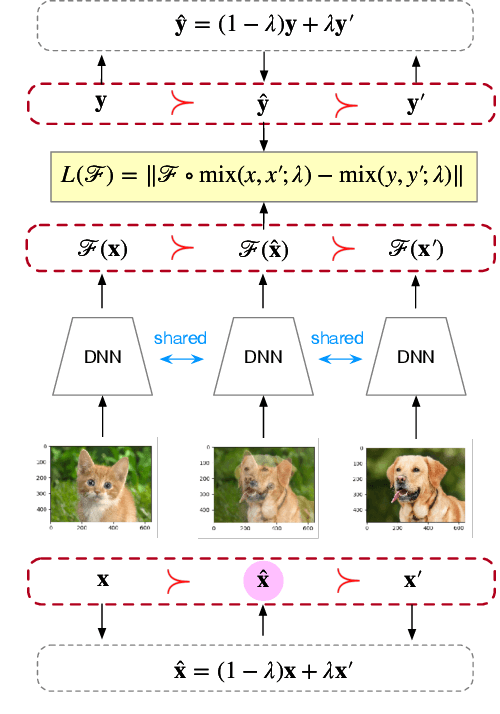



Abstract:Mixup and its variants form a popular class of data augmentation techniques.Using a random sample pair, it generates a new sample by linear interpolation of the inputs and labels. However, generating only one single interpolation may limit its augmentation ability. In this paper, we propose a simple yet effective extension called multi-mix, which generates multiple interpolations from a sample pair. With an ordered sequence of generated samples, multi-mix can better guide the training process than standard mixup. Moreover, theoretically, this can also reduce the stochastic gradient variance. Extensive experiments on a number of synthetic and large-scale data sets demonstrate that multi-mix outperforms various mixup variants and non-mixup-based baselines in terms of generalization, robustness, and calibration.
Localization matters too: How localization error affects UAV flight
Mar 07, 2024

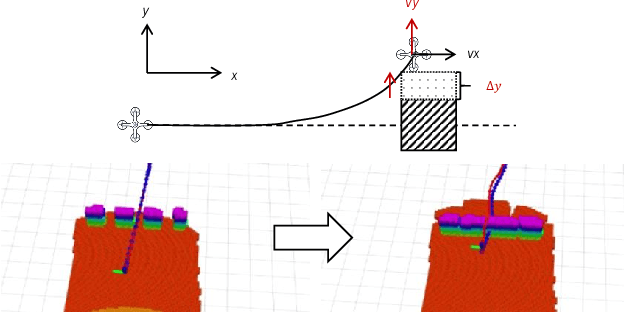
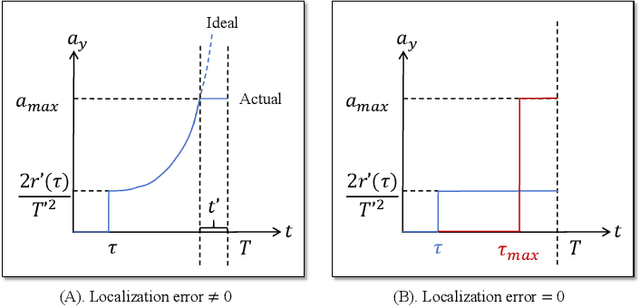
Abstract:The maximum safe flight speed of a Unmanned Aerial Vehicle (UAV) is an important indicator for measuring its efficiency in completing various tasks. This indicator is influenced by numerous parameters such as UAV localization error, perception range, and system latency. However, in terms of localization errors, although there have been many studies dedicated to improving the localization capability of UAVs, there is a lack of quantitative research on their impact on speed. In this work, we model the relationship between various parameters of the UAV and its maximum flight speed. We consider a scenario similar to navigating through dense forests, where the UAV needs to quickly avoid obstacles directly ahead and swiftly reorient after avoidance. Based on this scenario, we studied how parameters such as localization error affect the maximum safe speed during UAV flight, as well as the coupling relationships between these parameters. Furthermore, we validated our model in a simulation environment, and the results showed that the predicted maximum safe speed had an error of less than 20% compared to the test speed. In high-density situations, localization error has a significant impact on the UAV's maximum safe flight speed. This model can help designers utilize more suitable software and hardware to construct a UAV system.
PixArt-$α$: Fast Training of Diffusion Transformer for Photorealistic Text-to-Image Synthesis
Oct 16, 2023



Abstract:The most advanced text-to-image (T2I) models require significant training costs (e.g., millions of GPU hours), seriously hindering the fundamental innovation for the AIGC community while increasing CO2 emissions. This paper introduces PIXART-$\alpha$, a Transformer-based T2I diffusion model whose image generation quality is competitive with state-of-the-art image generators (e.g., Imagen, SDXL, and even Midjourney), reaching near-commercial application standards. Additionally, it supports high-resolution image synthesis up to 1024px resolution with low training cost, as shown in Figure 1 and 2. To achieve this goal, three core designs are proposed: (1) Training strategy decomposition: We devise three distinct training steps that separately optimize pixel dependency, text-image alignment, and image aesthetic quality; (2) Efficient T2I Transformer: We incorporate cross-attention modules into Diffusion Transformer (DiT) to inject text conditions and streamline the computation-intensive class-condition branch; (3) High-informative data: We emphasize the significance of concept density in text-image pairs and leverage a large Vision-Language model to auto-label dense pseudo-captions to assist text-image alignment learning. As a result, PIXART-$\alpha$'s training speed markedly surpasses existing large-scale T2I models, e.g., PIXART-$\alpha$ only takes 10.8% of Stable Diffusion v1.5's training time (675 vs. 6,250 A100 GPU days), saving nearly \$300,000 (\$26,000 vs. \$320,000) and reducing 90% CO2 emissions. Moreover, compared with a larger SOTA model, RAPHAEL, our training cost is merely 1%. Extensive experiments demonstrate that PIXART-$\alpha$ excels in image quality, artistry, and semantic control. We hope PIXART-$\alpha$ will provide new insights to the AIGC community and startups to accelerate building their own high-quality yet low-cost generative models from scratch.
MetaMath: Bootstrap Your Own Mathematical Questions for Large Language Models
Sep 22, 2023Abstract:Large language models (LLMs) have pushed the limits of natural language understanding and exhibited excellent problem-solving ability. Despite the great success, most existing open-source LLMs (e.g., LLaMA-2) are still far away from satisfactory for solving mathematical problem due to the complex reasoning procedures. To bridge this gap, we propose MetaMath, a fine-tuned language model that specializes in mathematical reasoning. Specifically, we start by bootstrapping mathematical questions by rewriting the question from multiple perspectives without extra knowledge, which results in a new dataset called MetaMathQA. Then we fine-tune the LLaMA-2 models on MetaMathQA. Experimental results on two popular benchmarks (i.e., GSM8K and MATH) for mathematical reasoning demonstrate that MetaMath outperforms a suite of open-source LLMs by a significant margin. Our MetaMath-7B model achieves 66.4% on GSM8K and 19.4% on MATH, exceeding the state-of-the-art models of the same size by 11.5% and 8.7%. Particularly, MetaMath-70B achieves an accuracy of 82.3% on GSM8K, slightly better than GPT-3.5-Turbo. We release the MetaMathQA dataset, the MetaMath models with different model sizes and the training code for public use.
DiffFlow: A Unified SDE Framework for Score-Based Diffusion Models and Generative Adversarial Networks
Jul 05, 2023
Abstract:Generative models can be categorized into two types: explicit generative models that define explicit density forms and allow exact likelihood inference, such as score-based diffusion models (SDMs) and normalizing flows; implicit generative models that directly learn a transformation from the prior to the data distribution, such as generative adversarial nets (GANs). While these two types of models have shown great success, they suffer from respective limitations that hinder them from achieving fast sampling and high sample quality simultaneously. In this paper, we propose a unified theoretic framework for SDMs and GANs. We shown that: i) the learning dynamics of both SDMs and GANs can be described as a novel SDE named Discriminator Denoising Diffusion Flow (DiffFlow) where the drift can be determined by some weighted combinations of scores of the real data and the generated data; ii) By adjusting the relative weights between different score terms, we can obtain a smooth transition between SDMs and GANs while the marginal distribution of the SDE remains invariant to the change of the weights; iii) we prove the asymptotic optimality and maximal likelihood training scheme of the DiffFlow dynamics; iv) under our unified theoretic framework, we introduce several instantiations of the DiffFLow that provide new algorithms beyond GANs and SDMs with exact likelihood inference and have potential to achieve flexible trade-off between high sample quality and fast sampling speed.
Point Cloud Change Detection With Stereo V-SLAM:Dataset, Metrics and Baseline
Jul 01, 2022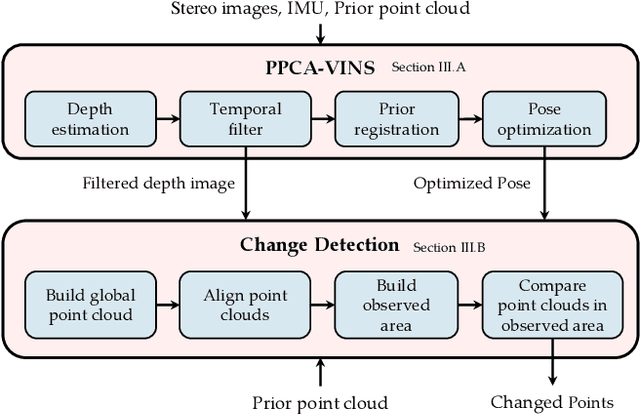
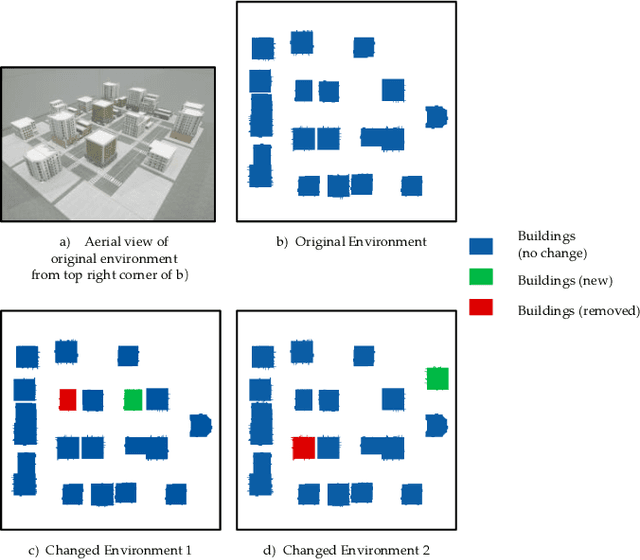
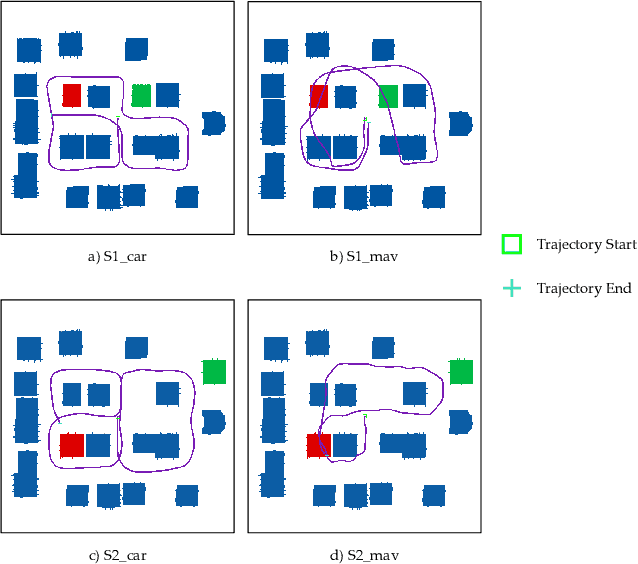
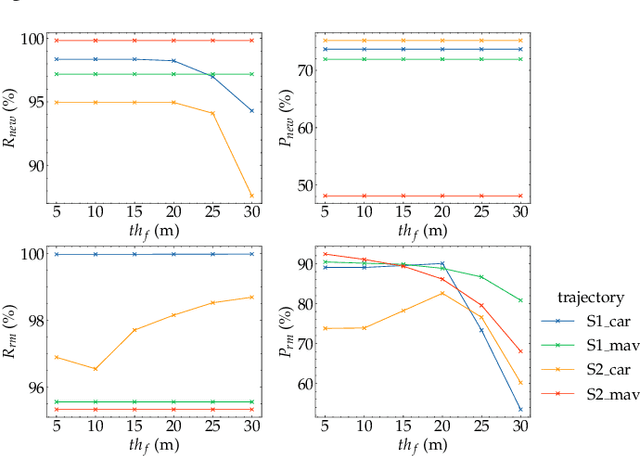
Abstract:Localization and navigation are basic robotic tasks requiring an accurate and up-to-date map to finish these tasks, with crowdsourced data to detect map changes posing an appealing solution. Collecting and processing crowdsourced data requires low-cost sensors and algorithms, but existing methods rely on expensive sensors or computationally expensive algorithms. Additionally, there is no existing dataset to evaluate point cloud change detection. Thus, this paper proposes a novel framework using low-cost sensors like stereo cameras and IMU to detect changes in a point cloud map. Moreover, we create a dataset and the corresponding metrics to evaluate point cloud change detection with the help of the high-fidelity simulator Unreal Engine 4. Experiments show that our visualbased framework can effectively detect the changes in our dataset.
Explore-Bench: Data Sets, Metrics and Evaluations for Frontier-based and Deep-reinforcement-learning-based Autonomous Exploration
Feb 24, 2022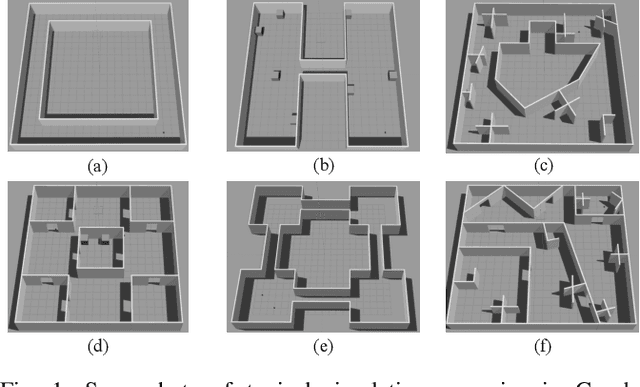
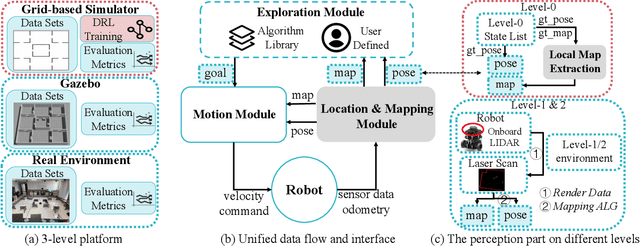
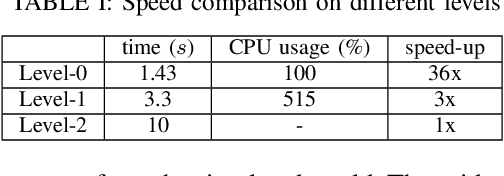

Abstract:Autonomous exploration and mapping of unknown terrains employing single or multiple robots is an essential task in mobile robotics and has therefore been widely investigated. Nevertheless, given the lack of unified data sets, metrics, and platforms to evaluate the exploration approaches, we develop an autonomous robot exploration benchmark entitled Explore-Bench. The benchmark involves various exploration scenarios and presents two types of quantitative metrics to evaluate exploration efficiency and multi-robot cooperation. Explore-Bench is extremely useful as, recently, deep reinforcement learning (DRL) has been widely used for robot exploration tasks and achieved promising results. However, training DRL-based approaches requires large data sets, and additionally, current benchmarks rely on realistic simulators with a slow simulation speed, which is not appropriate for training exploration strategies. Hence, to support efficient DRL training and comprehensive evaluation, the suggested Explore-Bench designs a 3-level platform with a unified data flow and $12 \times$ speed-up that includes a grid-based simulator for fast evaluation and efficient training, a realistic Gazebo simulator, and a remotely accessible robot testbed for high-accuracy tests in physical environments. The practicality of the proposed benchmark is highlighted with the application of one DRL-based and three frontier-based exploration approaches. Furthermore, we analyze the performance differences and provide some insights about the selection and design of exploration methods. Our benchmark is available at https://github.com/efc-robot/Explore-Bench.
 Add to Chrome
Add to Chrome Add to Firefox
Add to Firefox Add to Edge
Add to Edge